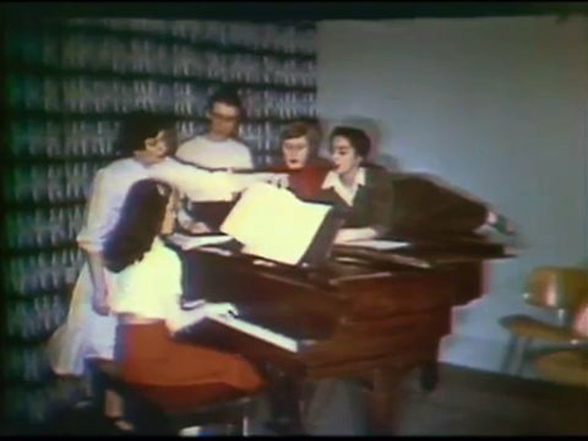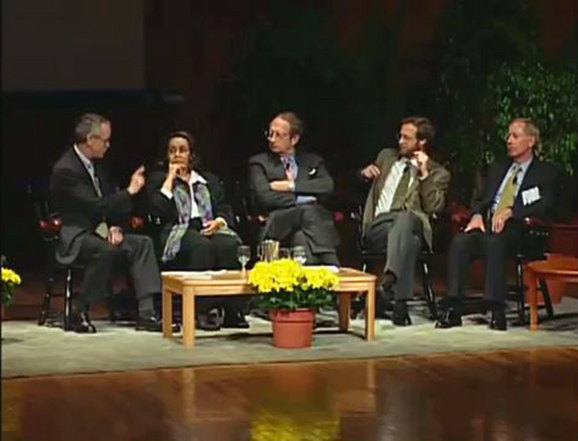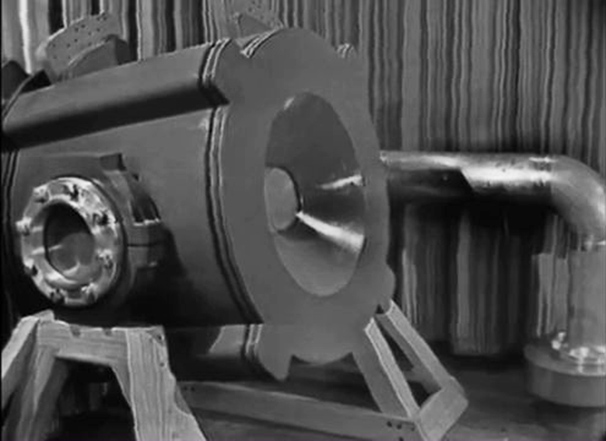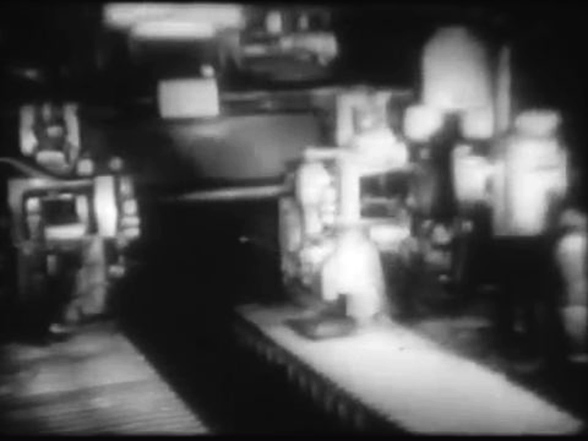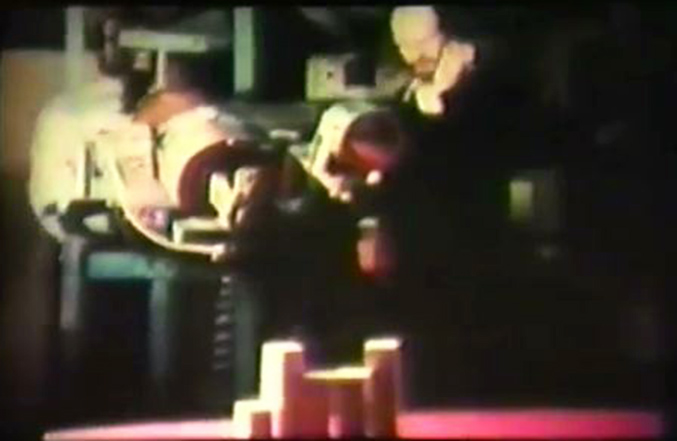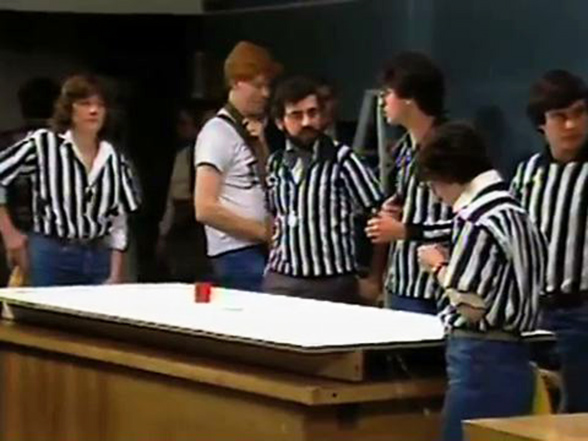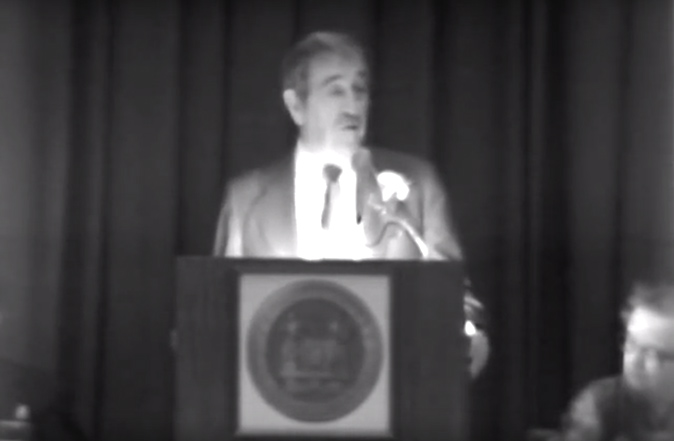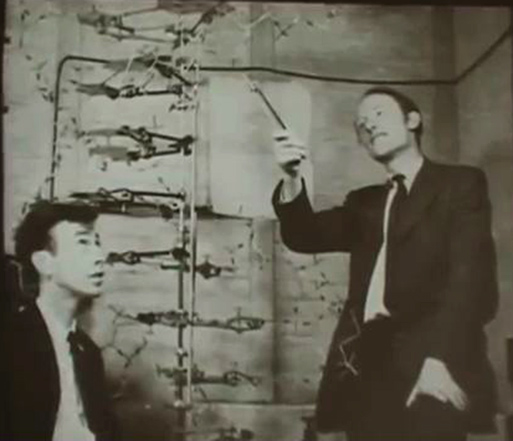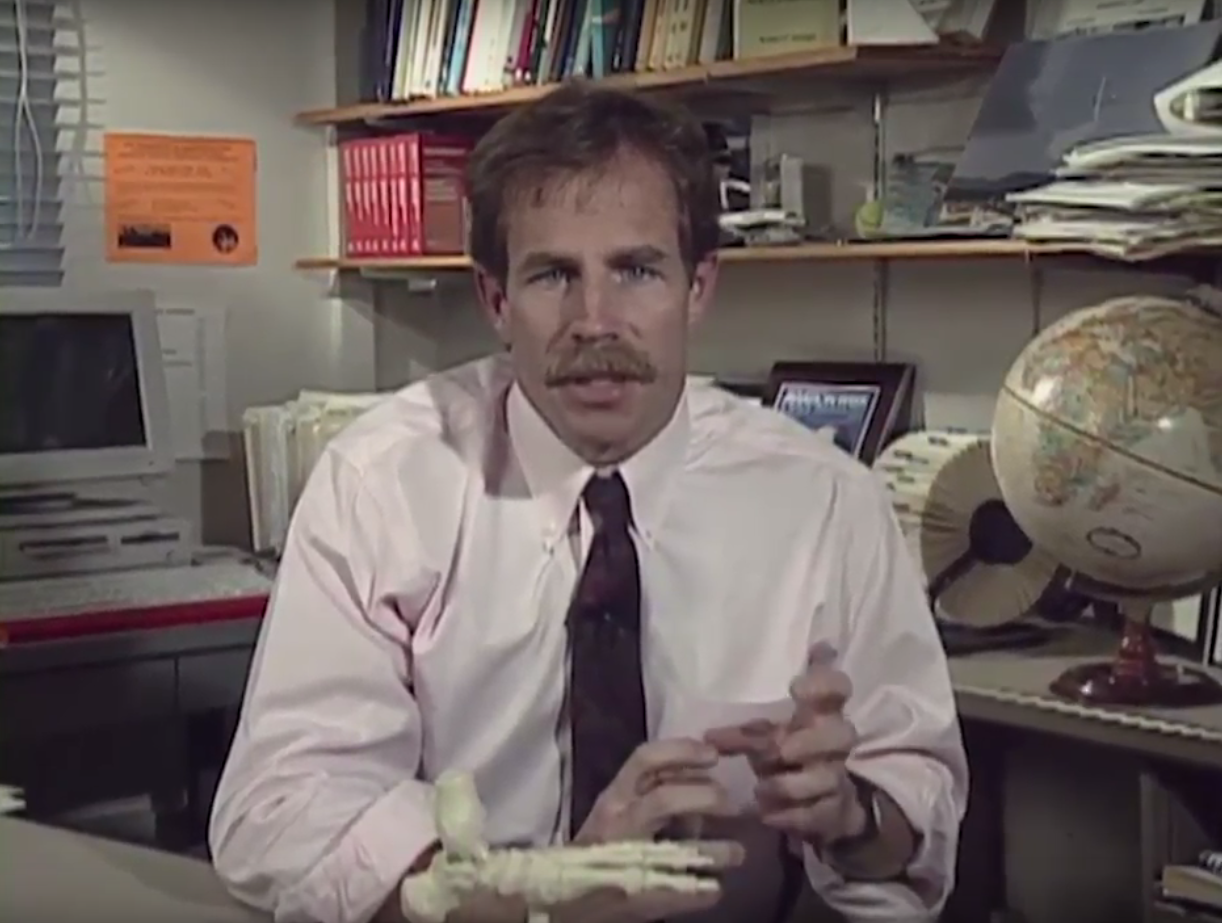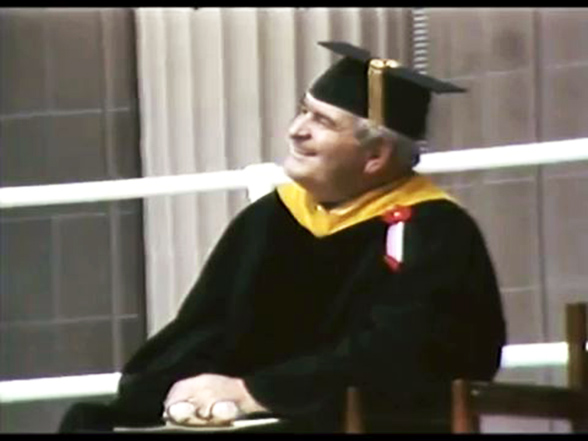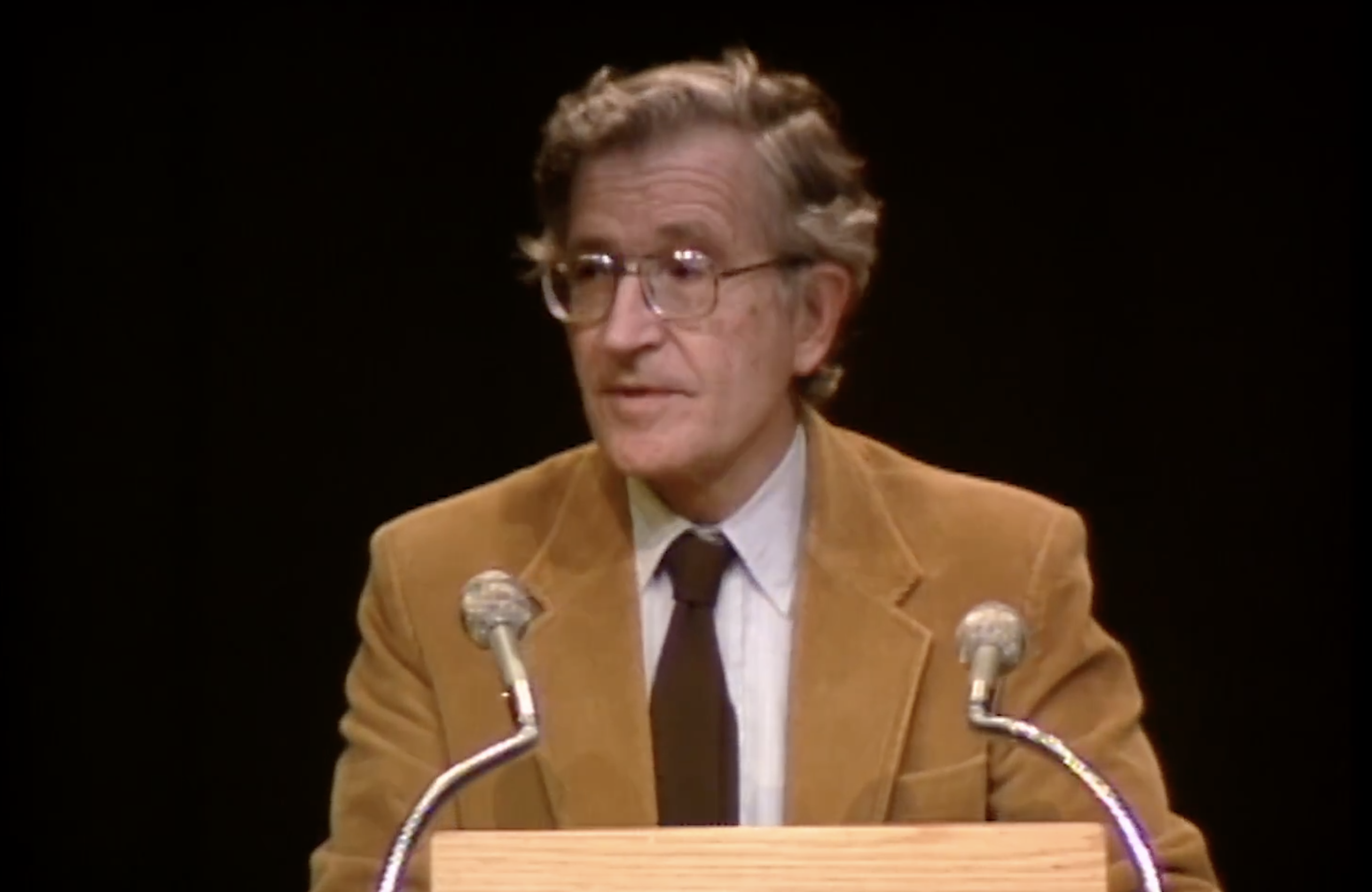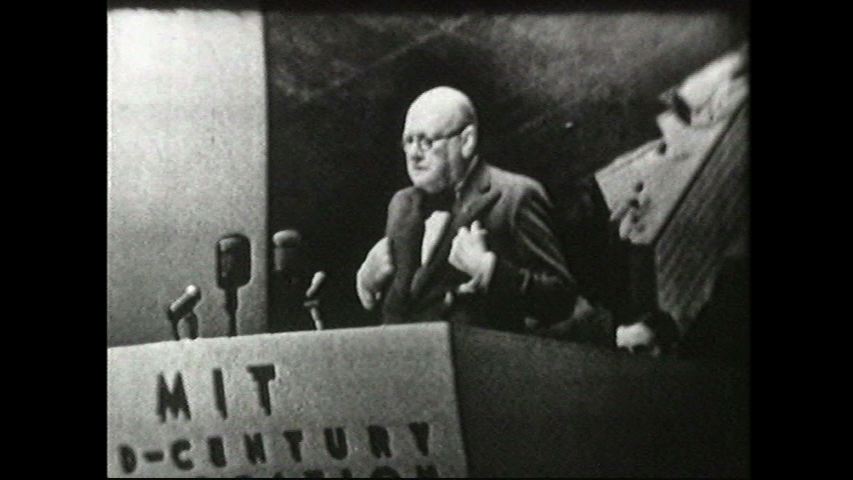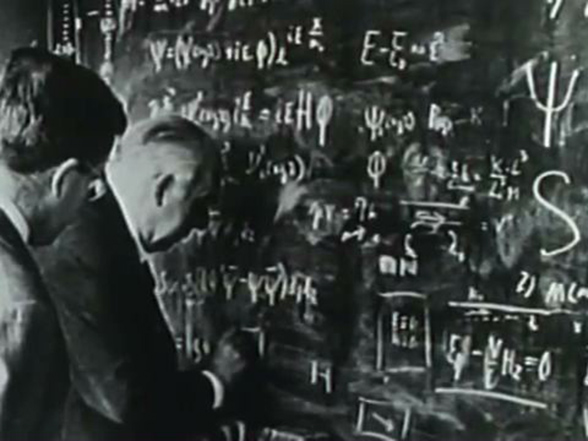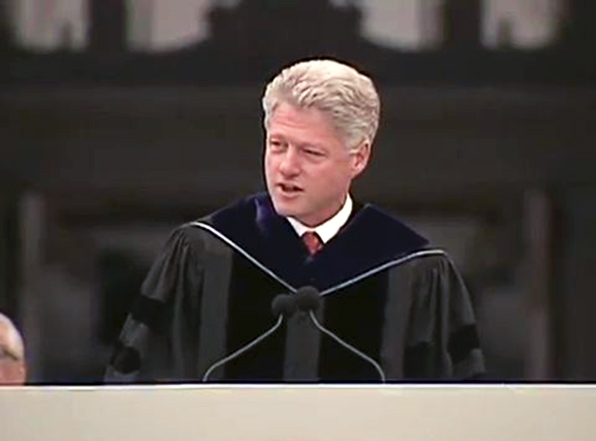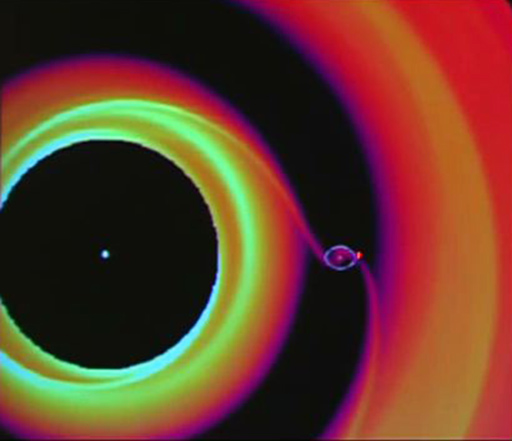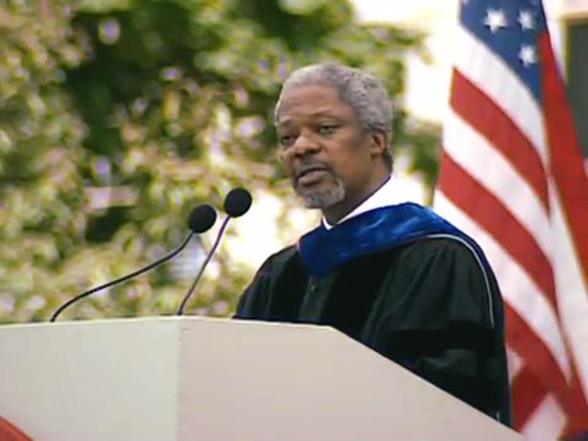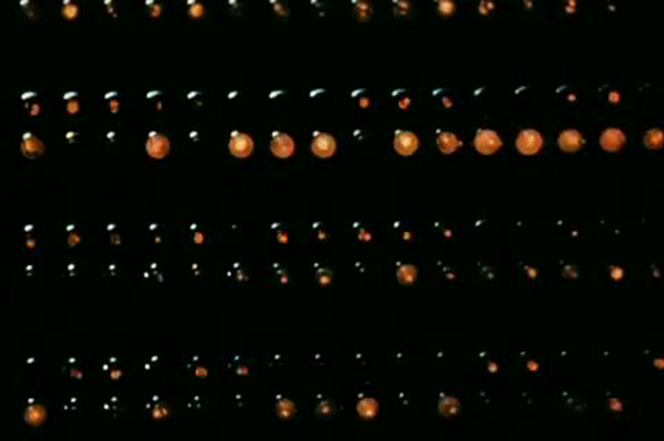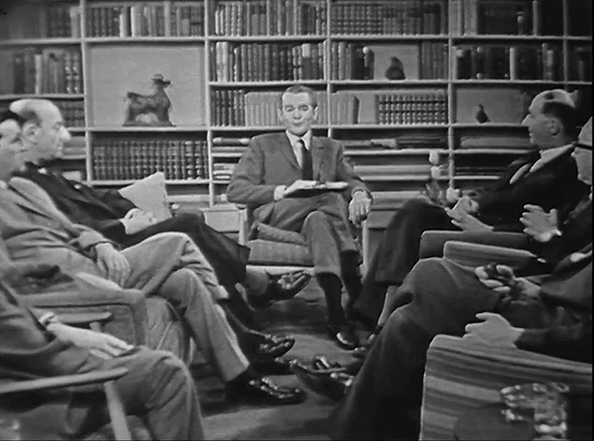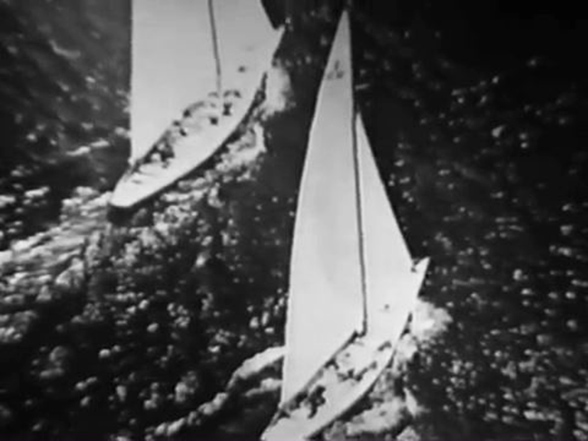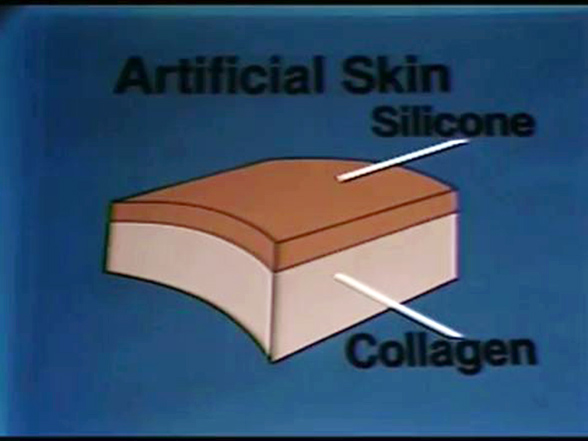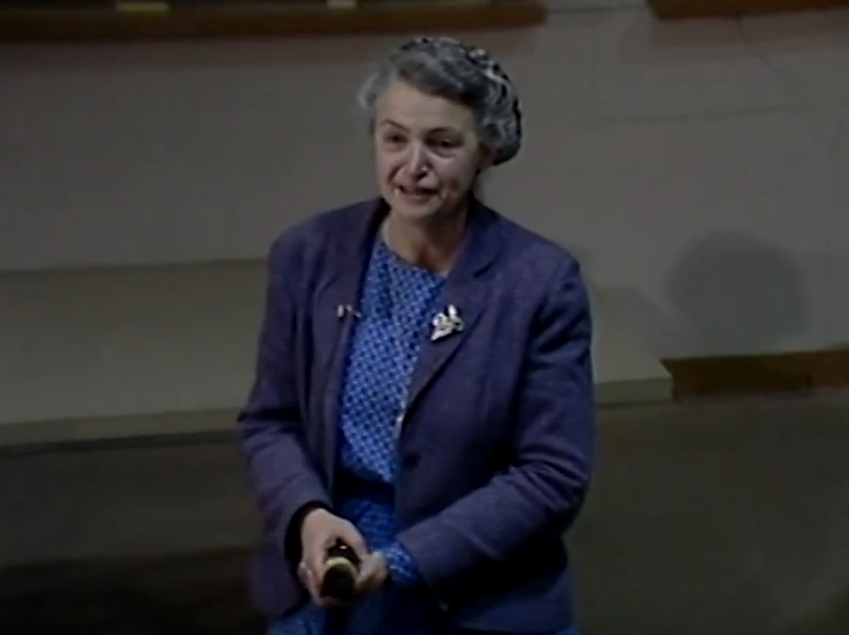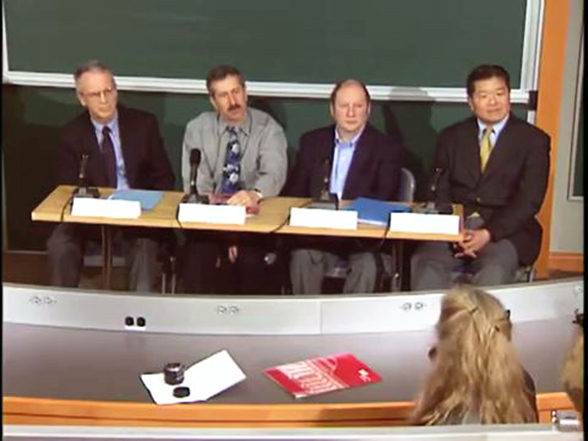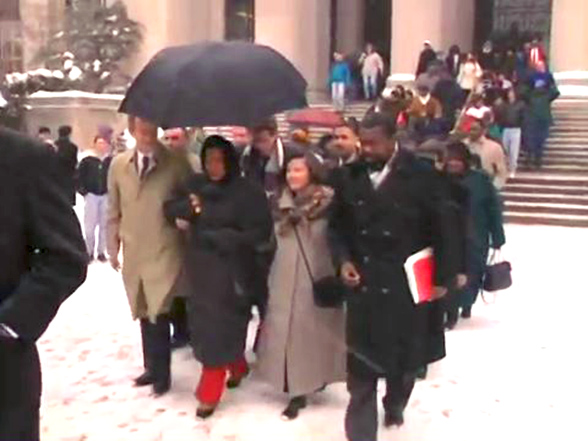Scenes from Two Programs about Victor Weisskopf
WEISSKOPF: It was in 1932, in the midst of the Great Depression. I was lucky to get a Rockefeller fellowship to go wherever I wanted to. And, as any theoretical physicist would chose, I chose Copenhagen to work with Niels Bohr. So I arrived in the midst of an international crowd of young people, all about in their 20s like myself. And we were working under the leadership of Bohr.
But Bohr was also one of us. Although he was 20 years older. He was 40 at that time. But he was a colleague, a friend. He was, of course, the first one to give us the ideas and the discussions. But he was always with us not only during the day, but also the evenings to go to the movies, to go on outings, hiking, et cetera, speaking about everything, not only physics.
BOHR: The story about [? Viki ?] that I remember my father telling that was shortly after you had come. Then, one day, you came to my father. Then, you said-- it was all in German, but-- now, I understand that the most important of all is [SPEAKING GERMAN], disrespect.
WEISSKOPF: Respect-- Disrespect.
BOHR: Disrespect. To which my father immediately answered you, oh. And [INAUDIBLE]. You must understand that in this institute, we do not even take disrespect quite seriously.
WEISSKOPF: Yes, I remember that. Yes.
And this was the place where Niels Bohr was sitting. From here, he was leading the discussion. He was usually sitting here and talking and interrupting the speaker who was there. And besides him were his closest friends, like Lise Meitner, Pauli Heisenberg. And the rest were sitting here in the first row. And we younger people, we were sitting behind there.
I feel almost out of place sitting here. How could I sit where Niels Bohr was sitting? He is-- and it was a tremendous thing to hear those different people speaking and always Bohr jumping up and-- now is the moment. Now, we must discuss this more, and so on.
BOHR: Like what [INAUDIBLE].
WEISSKOPF: And Heisenberg because he went to the blackboard. And I remember, for example, Heisenberg who was always so neat. Before he started his talk, he put-- the chalks that were lying around, he put them nicely parallel here this way. And then he started his talk. And, of course, Pauli quite different. Pauli walking up and down here this way and excitedly and talking and coming back again.
And there was this famous joke of Ian [? Fiste ?] who always made nasty jokes although he loved Pauli more than anything else. And he said you know with Pauli, when you talk, I am always so excited when you come to this point because of the great disappointment when you turn around and come back again hoping that he would leave.
And, of course, he never meant it that way.
It was a time when many problems that are solved today were not yet solved, but were about to be solved. So we were discussing what can we do, how can we understand how metals work, how the atom works, how light is emitted and absorbed by atoms. Although [? it was ?] very fundamental questions to understand the world which is around us.
All the famous physicists were talking here. I mean, for us, this room is really something.
PHYSICIST : Well, there were a few who never came here. Say, for instance, Sommerfeld.
BOHR: I think in 1919 or something like that.
PHYSICIST : [? [INAUDIBLE] ?]
WEISSKOPF: Einstein. Einstein may not have been. At least my--
PHYSICIST : But let's say in the conferences, after '29, I don't think Sommerfeld appeared.
WEISSKOPF: No, that-- I think you're right. But I'm--
PHYSICIST : And Schrodinger.
WEISSKOPF: Schrodinger--
[INTERPOSING VOICES]
BOHR: He came in '26 for this famous discussion.
PHYSICIST : Oh, yes. I know. I know.
WEISSKOPF: I remember he was here in my time, in the '30s. But Einstein, I don't remember.
[INTERPOSING VOICES]
PHYSICIST : A man who did not come often, I think, was Bethe.
WEISSKOPF: Well, but he was here.
PHYSICIST : He was here. [INAUDIBLE].
WEISSKOPF: Bethe never came here for longer. But he came here for the conferences. Oh, I know we made fun of him.
PHYSICIST : Oh, yes. But--
WEISSKOPF: We made fun of Bethe. You remember-- you yourself, I hear you-- that was, I must admit, after the war. But he was here. He gave a talk. And in the comic section afterwards, we projected a picture of a [INAUDIBLE], all dark, nothing on it. And then you imitated Bethe. And you said, in this picture, you see an event that has not yet taken place. But it is not too early to draw the following conclusions.
BOHR: Oh, yeah. That's right. That's what he meant, wasn't it?
PHYSICIST : Yeah.
WEISSKOPF: So I would call this a [SPEAKING GERMAN], a holy hall.
Before quantum mechanics and before all these discoveries, the chemists knew a lot of elements, from hydrogen to Uranium. And every atom had a different quality. One is a metal. The other is a gas. One is brown. The other is red, and so on. Now-- we now, however, through quantum mechanics, from Bohr to Schrodinger and Heisenberg, and so, we could see that it's the number of electrons that makes all the quality because you just have to count the patterns.
You just count the pattern and see how far you count with a certain number of electrons. So I give you the number, and the physicist-- the quantum mechanic can give you the property of the element. And that's an interesting thing, how the quality can be explained by a quantity, namely by one number, only the number of electrons.
I want to give you an example about this quality/quantity relation. People have thought about what kind of atom you would get with 43 electrons. It must exist. Atoms with 44, with 45, with any number, so that should be there, too. Well, then the quantum mechanician sat down and calculated and found out, by means of those patterns and how you come with the 43 electrons.
And then it turned out that this object must be a metal. It must have a gray color. It must have a certain specific weight. It must have a certain melting point. And all this could be calculated, but that thing wasn't found in nature. Finally, people got an idea. Why isn't it here in nature?
Well, you see, in order to have an atom, you need not only the 43 electrons. You also need the nucleus, and the nucleus must have 43 positive charges to keep the 43 negative electrons together. And now, there are good reasons why on Earth you wouldn't find a nucleus with 43 charges. I'm not going to explain it here because it has to do with the whole development, the origin of all our elements. They were born in a hot star in a supernova explosion.
And somehow you can see that it's very hard for nature to construct just that nucleus that happens to have 43 positive charges, and that's why we don't find it on Earth. But then came the people with their cyclotrons and synchrotrons where you can actually make atomic nuclei. And they were able to make an atomic nucleus, indeed artificially, with a charge of 43.
And indeed, then, that you could make-- now we can make grams or kilograms of it. And indeed, it was a metal. It was gray and had all these properties that you could calculate simply from the number 43. And that shows the great strength of quantum mechanics, how the chemical quality is now explained by a physical quantity, namely by the number of electrons. And the variety is possible only due to those primal patterns, which I have shown to you.
When you really look at it, there's one interesting element here, the importance of shape, the importance of definite patterns. Now, that is historically interesting because when Kepler and Galileo have found the-- have investigated planetary system and have found the orbits of the planet around the sun, Kepler was actually thinking of it. Why is Mercury at this distance, and why is Venus at this distance, why is the Earth at this distance, and so on, Jupiter?
And then he invented some kind of rule-- number rule, which almost is correct. But it turned out, of course, that Kepler was really wrong. They could just as well be different. It's accidental the way the present planets are. It is just the history of the planetary system that made them. But, you see, that idea that there are fundamental reasons for certain patterns around the center is true in the atom because of this wave-- these wave vibrations of the wave patterns.
And it is not true in the case of the planetary system. And one could even speak-- I like to speak about the harmony of the spheres. You see, because there is a-- as I told you, all these orbits, all these patterns, have very definite frequencies. And when you put these frequencies together, it's like a chord, like different tones, like different pitches.
Acoustically, I have tried it. It doesn't sound very good. But it is not our physical ear that counts here, but our intellectual ear know which sees that these frequencies are really the patterns of those-- are frequencies of those fundamental patterns. And in some way, I consider this the chord, the fundamental chord of nature. And, here, we come back to Pythagoras who spoke about the harmonies of the spheres. So now, we are coming to act IV of our story.
The waves and particles are really very different things. I remind you of my picture of the waves on the surface of the water and a school of fish as an example of a particle being. So how can it be one or the other? Should it not be possible by exact observation, by a detailed following the electron around in the atom to find out whether it's a particle or a wave?
One should try. And then it'll turn out it's either a particle or wave. Of course, we would get into trouble if it's either a particle or wave because it shows both properties. Now, here, we come to the most interesting part, which has even-- which has a great deal of philosophical significance.
And these ideas that I now want to present, they have been developed by Niels Bohr and by his collaborators, by Heisenberg, by Dirac and Pauli and many others in the school in Copenhagen, but always under the leadership of Niels Bohr.
There is something about, which we must never forget, and that is that we are here dealing with objects that are extremely small. The size of an atom-- of those patterns is a hundredth of a millionth of a centimeter, very small thing. Now, who says that the concepts and pictures that we make ourselves in our minds should still be valid in that region? Indeed, they aren't.
And that is what will come out of all this. And a great progress here in the-- our insight into nature was to recognise what kind of concepts, different ones, are valid there and how those new concepts are connected with the ones that we use when we describe ordinary things.
See, we are accustomed, from our pictures of the world, to think that processes can be divisible. They can be analyzed in each small-- in small steps. That's no longer so in the atomic world. Those states, which are symbolized by the wave patterns, which I've described before, they are what we call quantum states. They can't be analyzed one by one.
For example, how would we do it? Well, one way to do it is-- would be to look at it with a very fine instrument. Let's say with an electron microscope or with an ordinary microscope, which is so fine that you can really follow the electron. But now comes quantum theory. If you really try this, for example, to construct a microscope that would be able to distinguish an electron in the atom, you'll find out that the light that you need has so high frequency that its quantum will be so big that it will destroy the quantum state when you observe it.
Or if you use an electron microscope to get the details, the electrons would have to be so energetic that they would destroy the quantum state. The existence of these quantum states-- these are those patterns-- is-- cannot be directly observed. It's there, but you cannot observe it in the old-fashioned way by following it. Indeed, if you tried to do this, you destroy it.
That's a very interesting situation. This is why it is really possible that this quantum state, sometimes, is like an electron-- like a particle and sometimes it's like a wave. And I would like to read you one formulation of my friend David Bohm, which expressed it in such a nice way.
"The electron may be regarded as an entity that has potentialities for developing either particle properties or wave properties depending on the type of instruments with which it interacts and depending in what situation it is."
These are the words of David Bohm. I would say the electron is-- and the light is neither a particle nor a wave. I often like to call it a wavicle. It has its own reality, and those concepts that we make ourselves of waves and particles are only partially true. It has its own reality, which is different from the kind of reality which we are accustomed to see.
And that is the essence of this idea of-- which Niels Bohr has formulated complementarity. The wave picture and the particle picture are two complimentary properties of the electron or of the light. They are seemingly contradicting each other. But, actually, they are not. Actually, they only show two different sides of the same phenomenon, only the phenomenon cannot be pictured in our ordinary day-to-day language.
And if you try to apply our ordinary day-to-day language, then, of course, it is-- sometimes shows wave properties, and, sometimes, it shows particle properties. Actually, it's a wavicle, or it's a quantum state. And that quantum state is the real reality. And the moment you try, for example, to observe it with our rough and coarse means of electron microscopes, you destroy the fine quantum state whose properties only come out if you leave it alone.
Bohr, perhaps a little jokingly, also speaks about complementarity between clarity and truth. If you want to be very clear, you usually are not quite-- saying not quite the truth. And if you really want to say the truth exactly, you cannot be very clear. I am always feeling this when I am telling you about the atoms. I want to be as clear as possible, but then I have a bad conscience that I perhaps don't tell you exactly the way it is because it would not be clear enough to speak to layman about it.
And perhaps, for me at least, the most illuminating illustration is in the following anecdote. Heisenberg and Felix Bloch, two very famous physicists-- Felix Bloch, by the way, is the one who was the first to illuminate the properties of metals on the basis of quantum mechanics.
Well, they were going for a walk on the beach, and Felix Bloch was trying to explain-- it was a very beautiful day. It was sunshine et cetera. And Felix Bloch was trying to explain to Heisenberg some mathematical properties of space which have been recently discovered. And, suddenly-- Heisenberg listens to it. And, suddenly, Heisenberg says, well, space is blue, and birds fly in it. You see, true. That's also true.
